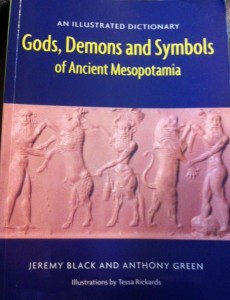The perfect day for MAGIC! We love it! And remain enthralled by its mystery, mysticism, and supernatural power!
You know you believe—or you really, really want to–because everyone wants a little magic in their lives!
Ancient Mesopotamians were no different! In fact, magic and sorcery were a very normal part of their everyday lives.
They believed the world was often threatened by a host of demons–the supernatural kind– and sorcerers–the human kind. Note: sorcerers–or more accuracately, sorceresses brought bad magic.
The Black magic of the demons and sorcerers resulted in mental illness, physical ailments, disease, lack of libido, colicky babes, and any number of ailments, and were thought to derive from an individual’s sin or engaging in some social taboo.
White magic was used to counteract the bad with incense, amulets, potions, enemas, incantations, and other rituals ( ritual sex being one of them).
Medical treatments and divination, therefore, were often performed in tandem.
The asu or physician was summoned, along with the asipu– a sort of shaman–part medicine, part diviner. The asipu’s task was to fight the bad magic with white healing magic.
The earliest incantations date from 2400 BC, but stone tablets in the Early Dynastic period are a wee bit difficult to read, so no clear records of the complete rituals exist–but who knows what future digs will unearth!
But we do know that there were about 4 types of incantations.
1. Speaking directly to the demons, the magician, in an effort to protect himself from the demons, announced his associations with the good white magic gods Enki, Damkina, and Asarluhi. “Be conjured by heaven! Be conjured by the Underworld!” was a typical refrain. ( Don’t try this at home.)
2. The next was an incantation of protection for all the innocent bystanders. This was followed by…
3. a very detailed description of each demon and the result of their evilness.
4. The final incantation was directed at the objects used in the white magic ritual, thereby enchanting them with white magic. Onions, dates, branches, salt, cedar, wool, flour, incense, sea water, matting, wool, are all examples of objects that would have been imbued with sacred healing power.
What if an ancient Mesopotamian gal or guy had NO IDEA what they did wrong to warrant such an illness! Don’t worry! They had a ritual for that! It was called Surpu (burning).
The ritual included naming all the possible sins the afflicted might have committed ( that had to be a long ritual) before the patient was given a onion to peel into the fire–or reed mat to unravel or dates to pick from a branch— thereby stripping away The Bad. While the patient was performing this ritualistic undoing, the magician recited incantations. Afterwards, the magician extinguished the fire, thus symbolically extinguishing the patient’s sin.
Another magic ritual was the Akkadian namburbu, which counteracted an evil portent of the future. Magic circles, sacrificed goats, purification, copper bells, and drums were just a few of the rituals involved.
Magicians and diviners weren’t cheap! Kings and wealthy citizens probably were the beneficiaries of the most elaborate ritual magic.
Fun fact: Female witches were feared because they were considered more powerful than male wizards.
My blog readers often ask me where I get my information from, so I’ll start citing my research! The photo at the top of the blog shows the cover of the book I used for today’s topic ( as well as ongoing research for my Merkabah series).
Related Links: Engaging Enigmas
- Related Links: Rock Your Writing; Symbolism & more symbols;
- Click Amazon link to novels.
















